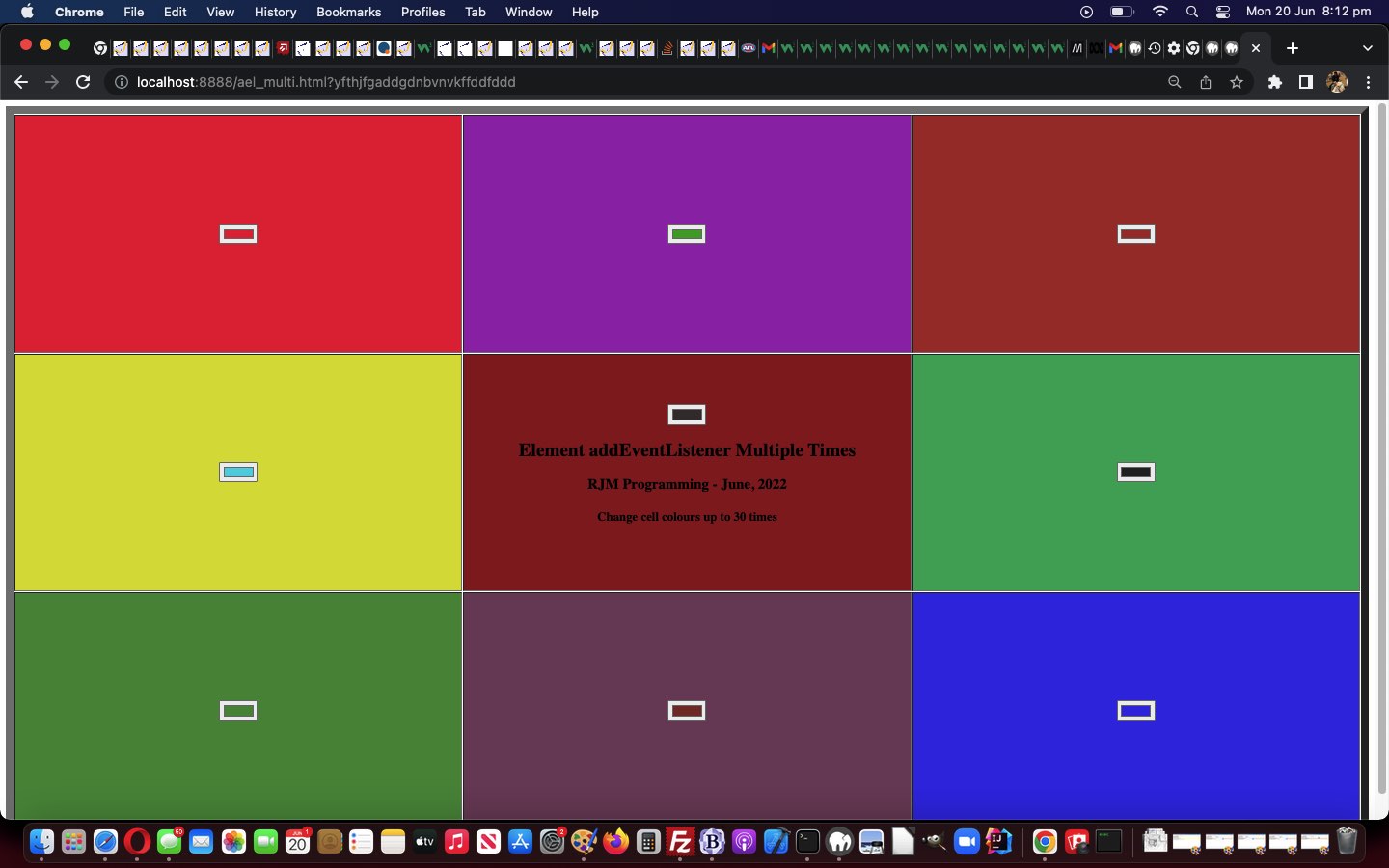The dynamic creation of event logic associated with webpage HTML elements is a powerful tool for making your webpages dynamic.
In the case of the great [element].addEventListener means by which you can make this happen, there is a great feature that goes …
If you can swing it that the second “function” parameter to [element].addEventListener is unique and just a straight simple function object reference you can pile on multiple same-type event logics onto the one HTML element
We wanted to combine that premise with a dynamic user entered “data item” into that mix, in our “proof of concept” ael_multi.html‘s cell multiple background colour controller web application for you, today. This means creating a discrete “not existing beforehand” Javascript function on the fly. Yes, we can do that via …
var thirty=1;
var bcols=['#ffffff'];
var icols=[''];
function moreevs() {
var tag=null;
for (var i=2; i<=30; i++) {
tag = document.createElement('script');
tag.type='text/javascript';
tag.innerHTML=' function ev' + i + '() { document.getElementById(icols[' + i + ']).style.backgroundColor=bcols[' + i + ']; setTimeout(ev' + i + ', 3000); } ';
document.head.appendChild(tag);
}
thirty=30;
}
function ev1() {
document.getElementById(icols[1]).style.backgroundColor=bcols[1];
setTimeout(ev1, 3000);
}
… but how do we get the proper [element].addEventListener call into the mix? This was a “first time” usage for us as per the eval inspired …
var fnum=0;
function ael_more(iois) {
var tag=null;
var eok=true;
fnum++;
if (fnum > thirty) {
tag = document.createElement('script');
tag.type='text/javascript';
tag.innerHTML=' function ev' + fnum + '() { document.getElementById(icols[' + fnum + ']).style.backgroundColor=bcols[' + fnum + ']; setTimeout(ev' + fnum + ', 3000); } ';
document.head.appendChild(tag);
thirty=fnum;
eok=false;
}
bcols.push(iois.value);
icols.push(iois.id.replace('i','td'));
if (eok) {
document.getElementById(iois.id.replace('i','td')).addEventListener("click", eval("ev" + fnum + '()'));
} else {
document.getElementById(iois.id.replace('i','td')).addEventListener("click", window["ev" + fnum + '']);
}
document.getElementById(iois.id.replace('i','td')).click();
}
… you can see in (perhaps animated) action below, where the user chooses background colours from the colour picker elements shown …
If this was interesting you may be interested in this too.



